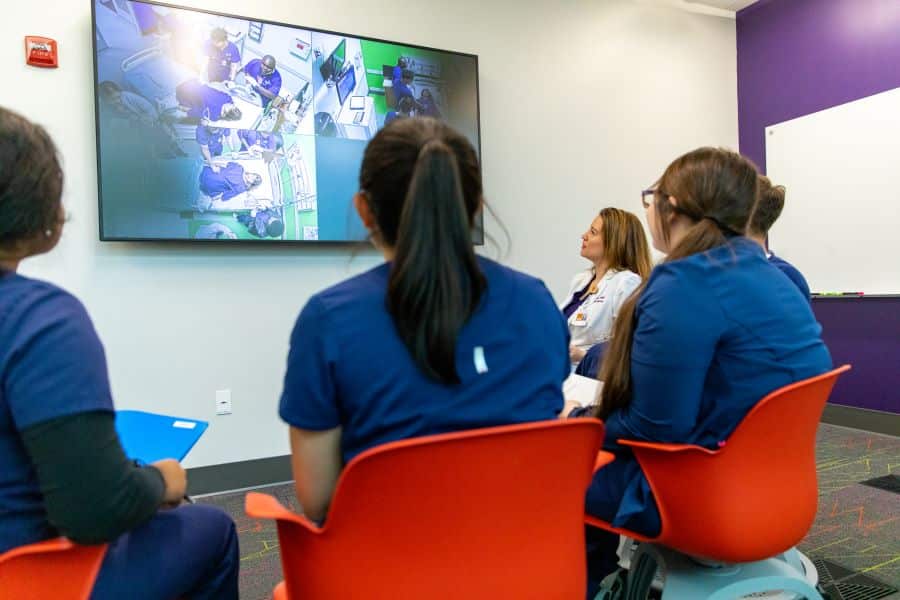
Optimize Your Simulation for Success With the Right Debriefing Setup
DEBRIEFING IS A CRITICAL STEP IN ANY HEALTHCARE SIMULATION CURRICULUM — MAKE SURE YOU KNOW WHAT YOU NEED FOR SUCCESSFUL DEBRIEFINGS
Research shows the majority of learning and critical analysis occurs during the debriefing session of healthcare simulation training. During debriefing, medical students have the chance to not only hear feedback from their instructors but see — through video playback — what went right, what went wrong, and what can be improved upon next time. It’s easy to miss small details during the hustle of a simulated experience, but debriefing opens a critical space for reflection and evaluation. The result is medical students learn and absorb valuable lessons to take with them into the next simulation and real-life scenarios. Keep reading to learn how simulation debriefing leads to better outcomes — and the components you need for successful debriefing for your Chicago, IL, simulation lab.
SEE ALSO: 3 Areas Worth the Investment in Your Healthcare Simulation
Instructors Provide Detailed Feedback for Learning and Training Purposes
Advanced debriefing software from SIMStation allows simulation instructors to bookmark video, make annotations and notations during recording, create and edit checklists, write notes and time-stamp videos using a handheld tablet in the training room during the simulation. In the debriefing room, instructors use the same handheld tablets as a remote control to playback recorded video, view live camera shots, and discuss annotated notes with students. Instructors can also intersperse discussion with PowerPoints and instructional videos uploaded onto the tablet and projected to the TV screen in the debriefing room. The purpose of simulation training is to expose future doctors and nurses to realistic medical scenarios. Interrupting a simulation to give students feedback in the moment disrupts and obstructs the learning process. A dedicated debriefing session allows room for reflection, detailed feedback with accompanying video, and questions — all of which help students process the simulation and learn from it.
Medical Students Benefit From Visual Cues
Humans are visual creatures, and we rely heavily on visual cues to identify behaviors and patterns and ultimately change them. In fact, we rely so much on visual cueing that our brains have adapted to process and analyze visual information in more effective ways. More than 50% of the human brain is dedicated to processing visual information. Therefore, video feedback where medical students can see themselves making errors is a much more effective way to stimulate knowledge absorption than strictly verbal feedback. During a fast-paced simulation, students may not even realize mistakes as they make them, but faced with visual proof, soon-to-be doctors and nurses have the chance to correct errors for future scenarios. Simulation lab design with enterprise-grade audio and video contributes to the overall success of debriefings. Pan-tilt-zoom (PTZ) cameras installed in the training room capture the scenario from all angles, providing students with a close-up, detailed look at specific actions they made during the simulation. Microphones record conversations, instructions, and controlled noises and diligently play back clear, intelligible audio during a debriefing session. A 4K TV screen in the debriefing room allows students to watch and listen to video playback with ease. Reliable, high-quality AV components form the backbone that facilitates successful debriefing sessions. Level 3 Audiovisual brings to the table a unique blend of AV technology expertise combined with extensive industry knowledge of healthcare simulation and debriefing. Unlike other companies that design or build simulation centers, Level 3 Audiovisual provides a complete, custom solution from start to finish. To learn more, reach out to us here or click the chatbox below to instantly connect.

